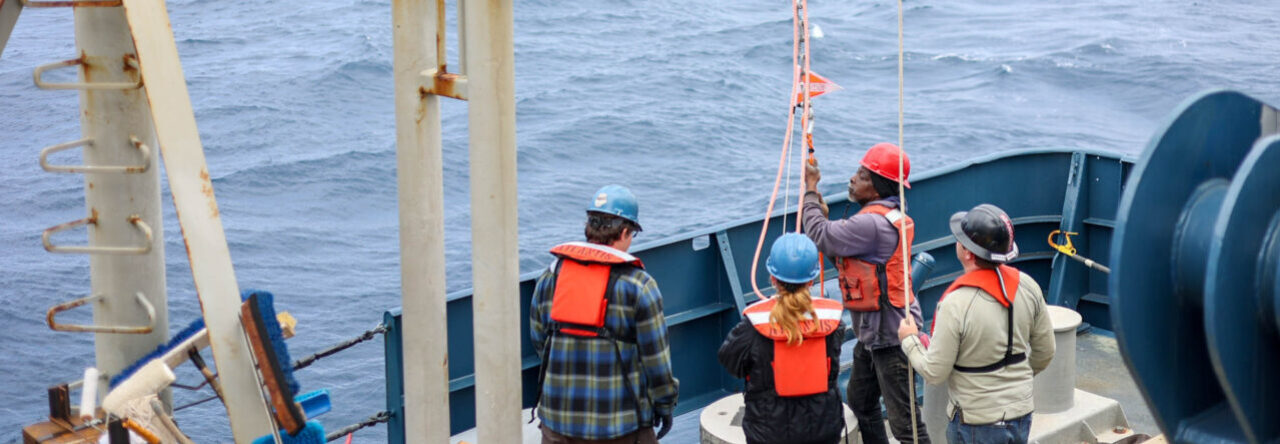Daylight is lasting a lot longer than I’ve ever experienced. Sunrise starts almost the moment I’m on shift (midnight). It’s hard to claim I’m on night shift when most of my work is still being done during the day. Overall, it seems like we’re all falling into a good rhythm. Usually, around 5 am, myself and the other tech on night duty start prepping the deck and the equipment for the day. Eddy, another MATE intern, writes us notes letting us know what work was done and what work we can do.
I finally had time to hang out with the science crew while they processed their samples. Before now, all I really got to see of their work was them taking the shuttles off the multicorer and into the vans (essentially, a shipping container kept at 33-36 degrees Fahrenheit) and then coming out with the mud in small bottles. I am really thankful that they took the time to show me their work. Inside the van, they have quite a bit of dedicated equipment that allows them to remove the mud from the shuttles without the mud being exposed to air.
I also had the joy of seeing an XBT (its Nicholas name is “Expendable Bathythermograph”) deployment. It is shaped a little like a toy rocket and essentially, it is a probe that measures the temperature as it falls through the water. There is a very thin copper wire connecting the probe to the equipment on the ship. When it reports that it has reached depth, we break the wire and leave the XBT in the ocean. It is something I’ve learned about in my studies but had heard they were not used most days as they are a bit wasteful, and there are other ways to get the same data.

